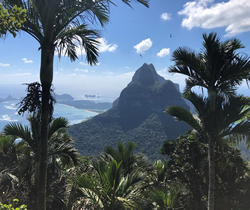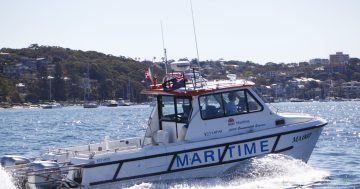 Visitors to Lord Howe Island can once again experience some of Australia’s best walking tracks with access restored to the northern sections of the Island’s Permanent Park Preserve (PPP).
Visitors to Lord Howe Island can once again experience some of Australia’s best walking tracks with access restored to the northern sections of the Island’s Permanent Park Preserve (PPP).
Head of the National Parks and Wildlife Service (NPWS), Atticus Fleming said the Lord Howe PPP was closed to all non-essential visitors earlier this month following the discovery of Myrtle Rust on the Island in February.
Myrtle Rust is a fungal plant disease that can spread rapidly over thousands of kilometres on wind currents and can cause huge losses in plant production.
Mr Fleming, who is also Chair of the Lord Howe Island Board (LHIB), said the reopening followed extensive searches in the settlement and PPP, found no new sites of myrtle rust infestation on the island.
“This is very pleasing news,” Mr Fleming said.
“Following an extensive treatment and monitoring program and isolation of the myrtle rust outbreak, vegetation adjacent to formal tracks in the PPP has been assessed and a staged reopening of tracks is underway,” he said.
“Based on technical advice, the successful treatment of known myrtle rust sites, and establishment of hygiene stations and rigorous protocols, walking tracks in the northern section of the island can be opened.”
Mr Fleming said continued vigilance would be required along with rapid treatment of any future detected outbreaks.
He said visitors would be provided with updated pre-trip information on biosecurity hazards and actions they could take to reduce the risk of transmission.
“In response to a request by the Lord Howe Island Board to help manage this outbreak of myrtle rust, a contingent of NPWS staff are on the island assisting with assessments of the PPP and running an incident management team in collaboration with the LHIB to oversee the response to the outbreak,” Mr Fleming said
“As an initial response LHIB and NPWS staff will be located at track heads during key times when walkers set off on their journey, to help walkers better understand correct biosecurity protocols,” he said.



